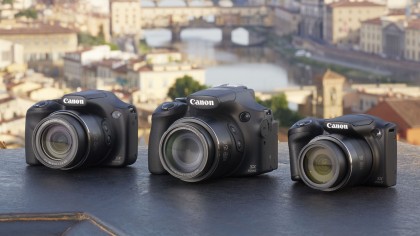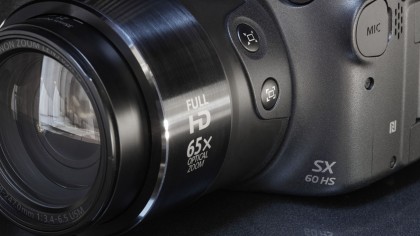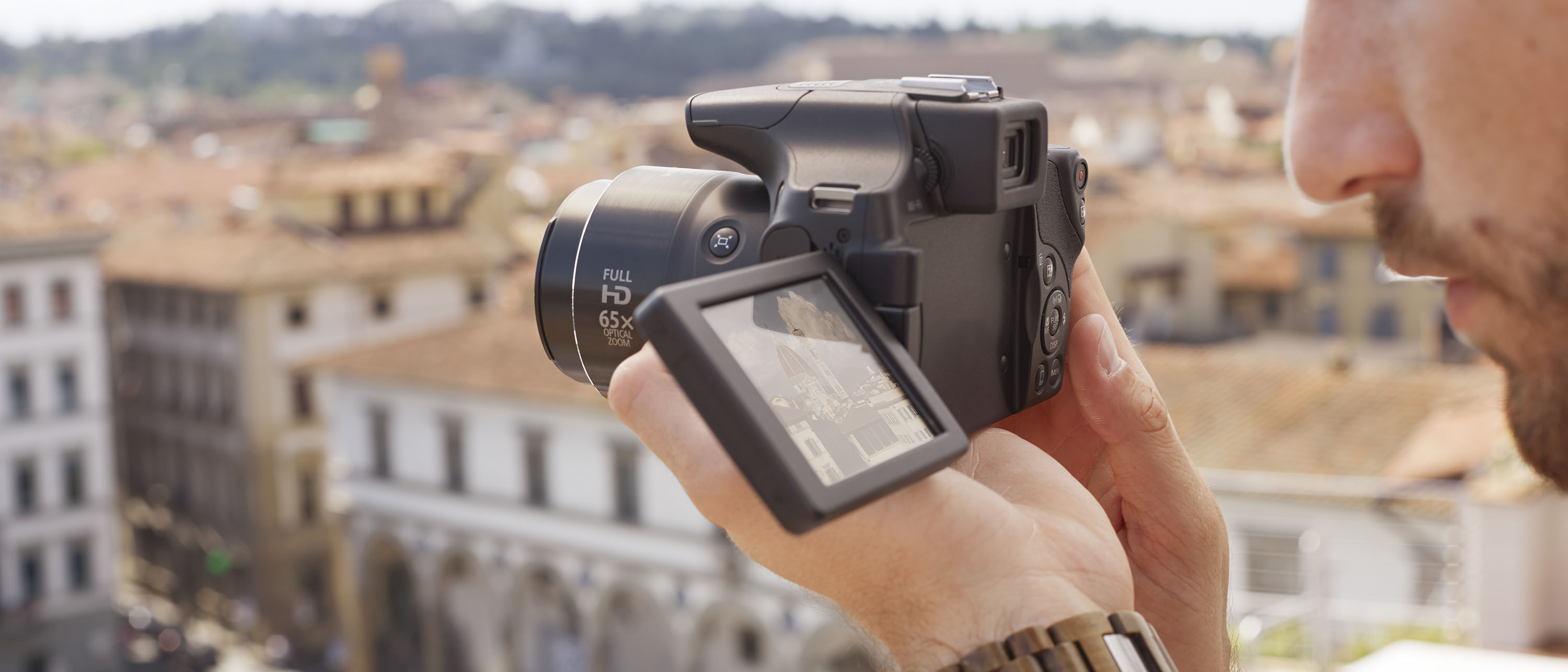TechRadar Verdict
With a 65x optical zoom, raw format shooting, inbuilt Wi-Fi and NFC, this is a well equipped bridge camera with a lot to offer the enthusiast.
Pros
- +
Market-leading 65x zoom range
- +
Full manual control and raw files
- +
Wi-Fi and NFC built in
Cons
- -
As big as an entry-level D-SLR
- -
No eye sensor on the viewfinder
- -
Lacks touch-screen control
Why you can trust TechRadar
Bridge cameras make for excellent travelling companions, offering the flexibility of a zoom range far larger than any DSLR's lens but in a relatively small body.
While in terms of physical size, the SX60 HS isn't far off that of an entry-level DSLR, it features a much smaller sensor. It houses a 16.1MP 1/2.3 inch CMOS sensor (the same physical size as most compact cameras on the market, but considerably smaller than those used by a DSLR). It does at least bring a jump in four million pixels from its predecessor the SX50 HS.
Features
- 1/2.3-inch CMOS sensor, 16.1MP
- 21-1365mm f/3.4-6.5 zoom lens
- 3.0-inch vari-angle screen, 922,000 dots

The SX60 HS offers a huge 65x optical zoom lens that provides a 21mm equivalent focal length at the wide angle end of the range and 1365mm equivalent at the telephoto end. At its widest point, the maximum aperture available is f/3.4, falling to f/6.5 at the zoom end.
Canon also has ZoomPlus technology, a type of digital zoom that boosts that range to 130x, or an incredible equivalent of 2730mm. ZoomPlus retains the resolution of an image shot using the optical zoom by interpolating pixels. A standard digital zoom is available to push that even further to 5460mm, but there will be a loss in image quality.

Full manual control is available, and like the SX50 before it, so is the ability to shoot in raw format - a clear indication that the company expects the PowerShot SX60 HS to be used by advanced enthusiasts. There's also a range of automatic modes, semi-automatic and scene modes.
For those who like to get creative, there are a couple of options with the PowerShot SX60 HS. First of all there's the Creative Shot mode – this will take one shot, plus 5 more with different random effects and crops applied. There's a variety of different subsets you can choose from, but you don't get absolute control over the digital filters which are applied. Secondly, there is a dedicated filters mode which allows you to choose a specific filter.

It's starting to become more common now, but the SX60 HS is equipped with inbuilt Wi-Fi and NFC. This allows you to use your smartphone or tablet to remotely control the camera, as well as giving you the option of transferring images taken on it quickly to your device for sharing online, via email and so on.
Sign up for breaking news, reviews, opinion, top tech deals, and more.
On the back of the camera is fully-articulated, 922,000-dot, 3.0-inch screen. It's not touch-sensitive though. It is joined by a 922,000-dot, 0.17-inch electronic viewfinder on the top of the camera.

The SX60 HS is a replacement for the SX50 HS which has been on the market for some time now. The SX50 HS boasted a 50x optical zoom, but it also had the ZoomPlus technology to boost that up to 100x. It also didn't have inbuilt Wi-Fi and NFC, so there's been quite a few improvements made to the camera.
In terms of competition, the SX60 HS goes up against the Sony Cyber-shot H400V and the Panasonic Lumix FZ82, which offer a 63x and 60x optical zoom, respectively.

Amy has been writing about cameras, photography and associated tech since 2009. Amy was once part of the photography testing team for Future Publishing working across TechRadar, Digital Camera, PhotoPlus, N Photo and Photography Week. For her photography, she has won awards and has been exhibited. She often partakes in unusual projects - including one intense year where she used a different camera every single day. Amy is currently the Features Editor at Amateur Photographer magazine, and in her increasingly little spare time works across a number of high-profile publications including Wired, Stuff, Digital Camera World, Expert Reviews, and just a little off-tangent, PetsRadar.
